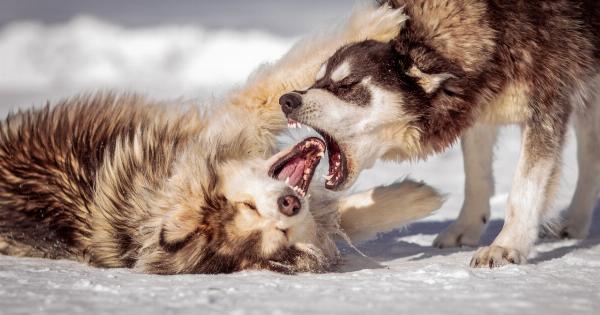Aggression in dogs is a complex issue that can have severe consequences if not properly addressed. While some breeds may have a predisposition to aggression, it is important to understand the science behind aggressive behavior in dogs.
By recognizing the triggers that can lead to aggression, dog owners can take proactive measures to prevent potential incidents. In this article, we will explore the science behind aggressive dogs and discuss the top five triggers to look out for.
1. Lack of Socialization
Socialization plays a vital role in a dog’s behavior and temperament. Dogs that have not been adequately exposed to different people, animals, and environments during their critical developmental period may be more prone to aggression.
When dogs do not learn how to properly interact with others, they may interpret certain situations as threats, leading to defensive or aggressive behavior.
2. Fear and Anxiety
Fear and anxiety are significant triggers for aggression in dogs. Dogs that are scared or anxious may resort to aggression as a means of self-defense or to protect their territory.
It is crucial for dog owners to understand the body language and signs of fear or anxiety in their pets to prevent potential aggressive outbreaks.
3. Resource Guarding
Resource guarding is a natural behavior in dogs, but it can escalate into aggression if not properly managed. Dogs may become possessive and aggressive when it comes to food, toys, or even their sleeping area.
It is essential for dog owners to establish clear boundaries and teach their pets proper behavior around valuable resources to avoid potential aggression.
4. Lack of Training and Discipline
A well-trained and disciplined dog is less likely to exhibit aggressive behavior. Dogs that lack proper training and discipline may not understand boundaries, leading to increased chances of aggression.
Consistent and positive training methods help establish a strong bond between the dog and the owner, promoting obedience and preventing potential aggression.
5. Genetic and Breed Factors
While it is crucial to avoid generalizing breeds, some genetic factors can predispose certain dogs to aggression.
Breeds that were originally bred for guarding, protection, or fighting purposes may exhibit higher aggression levels if not properly trained and socialized. It is important for dog owners to understand their breed’s specific needs and tendencies to prevent potential aggression.
Conclusion
Understanding the science behind aggressive dogs is essential for all dog owners. By recognizing the triggers that can lead to aggression, owners can take the necessary steps to prevent potential incidents.
Socialization, managing fear and anxiety, addressing resource guarding, providing proper training and discipline, and understanding breed-specific factors are all crucial components in maintaining a well-behaved and non-aggressive dog. With proper knowledge and proactive measures, we can create a safe and harmonious environment for both dogs and humans.


























